UMB buildings are designed, constructed, and maintained to keep occupants safe from fire. Life safety and fire protection systems at UMB include:
Fire Protection Features
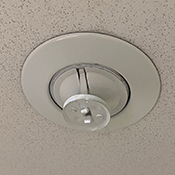
Sprinkler Systems
Sprinklers detect the presence of heat and automatically activate when the temperature threshold is reached (usually 155°F). Sprinklers are intended to control and/or extinguish fires and give occupants sufficient time to safely evacuate. Sprinkler systems are present in all occupied UMB buildings.
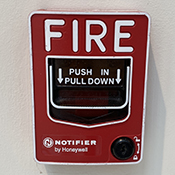
Fire Alarm Systems
Fire alarm systems detect the presence of hazardous conditions and provide rapid notification via speakers and strobes to building occupants so that people can safely evacuate. UMB Police monitor the fire alarm systems 24/7 to ensure that Baltimore City Fire Department is immediately dispatched in the event of an activation. Fire alarm systems are present in all UMB Buildings.
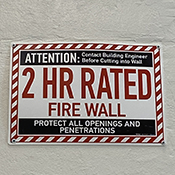
Fire-Resistance Rated Assemblies
Fire-resistance rated assemblies are present to subdivide buildings into sections and to prevent fire and smoke from spreading from one area to another. Examples include walls between lab areas and the corridor, stairwell exits, and floor assemblies. Doors in fire-resistance rated assemblies must always be kept closed.
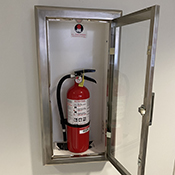
Fire Extinguishers
Fire extinguishers can be used to extinguish small fires that are in their incipient stage. Most extinguishers contain a dry chemical agent that blankets the burning material and interrupts the chemical reaction, which controls or extinguishes the fire. Fire extinguishers are located in most UMB buildings.
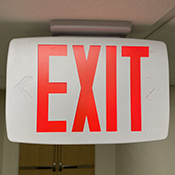
Exit Signs
Exit signs are mounted from the ceiling or wall and direct occupants to the nearest emergency exit. Exit signs are present in all UMB buildings.
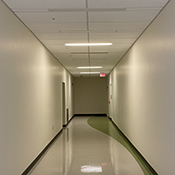
Emergency Lighting
Emergency light fixtures provide lighting in all situations, even during a power failure. Emergency lighting is provided so that occupants can safely find and reach the emergency exits during emergency conditions. Emergency lighting is provided in all UMB buildings.
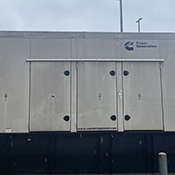
Emergency Power Supply Systems
Emergency Power Supply Systems, also known as generators, provide emergency power to UMB buildings to ensure that life safety and fire protection systems remain functional even during power failures. Fire alarm systems, exit signs, emergency lighting, and fire pumps are all connected to emergency power.
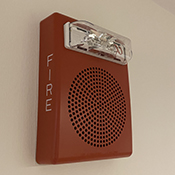
Mass Notification Systems
Mass notification systems allow emergency responders to relay live announcements throughout a building via the fire alarm speakers. The system can be used to provide notification, instructions, or updates for any type of emergency situation, whether it is related to fire or smoke, a weather event, or some other potential threat. Mass notification systems are provided in most UMB buildings.
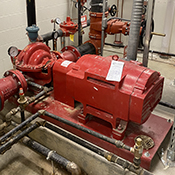
Fire Pumps
Fire pumps increase the pressure of the water supply serving sprinkler systems, which increases the flow rate of water coming out of sprinklers. Fire pumps automatically activate whenever a sprinkler activates. Fire pumps are typically found in high-rise buildings and buildings with low public water pressure.
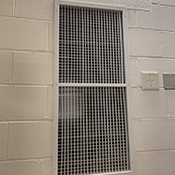
Stairwell Pressurization
Stairwell pressurization consists of fans and supply grilles that create a positive pressure in the stairwell with respect to the surrounding spaces. Smoke and other harmful gases are less likely to enter the stairwell if it has a positive pressure. The pressurization fans automatically start whenever the fire alarm activates. Stairwell pressurization systems are typically found in high-rise buildings.
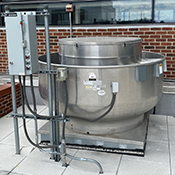
Smoke Exhaust Systems
Smoke exhaust systems consist of fans that have the sole purpose of removing smoke from a building or space. The fans are normally off but automatically turn on upon activation of a specific fire detector or upon fire alarm activation. Smoke exhaust systems are typically only found in atriums at UMB.
Contact
Office of the Fire Marshal
214 N Pine St
1st Floor
Baltimore, MD 21201


